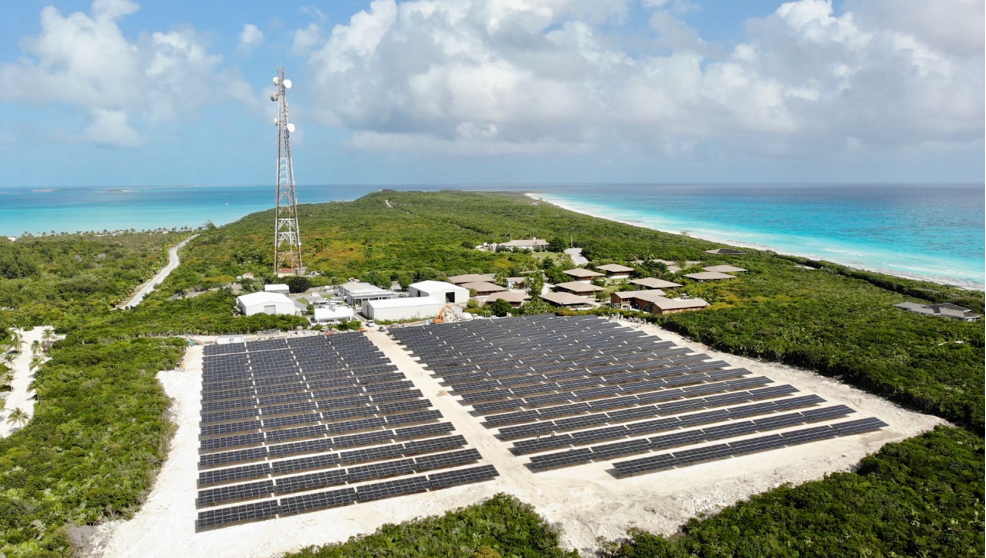
In today’s Electrek Green Energy Brief (EGEB):
- The International Energy Agency’s new report details the global transition to clean energy by 2050.
- The Bahamas installs a hurricane-resistant solar hybrid microgrid on Highbourne Cay.
- UnderstandSolar is a free service that links you to top-rated solar installers in your region for personalized solar estimates. Tesla now offers price matching, so it’s important to shop for the best quotes. Click here to learn more and get your quotes. — *ad.
IEA: No more new fossil fuels
The International Energy Agency (IEA) today released a special report that provides the first comprehensive energy-sector pathway toward global net-zero emissions by 2050.
The IEA report, “Net Zero by 2050: A roadmap for the global energy system,” sets out in detail, ahead of COP26, what governments, companies, investors, and citizens need to do to fully decarbonize the energy sector and put emissions on a path in line with a temperature rise of 1.5°C. That means no more investments in fossil fuels from 2021.
Fatih Birol, the IEA’s executive director and one of the world’s foremost energy economists, told the Guardian: “If governments are serious about the climate crisis, there can be no new investments in oil, gas and coal, from now – from this year.”
Dave Jones, global lead at independent climate and energy think tank Ember, said:
The sentence that will probably be recited most from this report is this: “Beyond projects already committed as of 2021, there are no new oil and gas fields approved for development in our pathway, and no new coal mines or mine extensions are required.” The implications of that sentence are far-reaching; this is truly a knife into the fossil fuel industry.
Although the IEA has embraced wind and solar less than other models, for example by the Energy Transitions Commission, the IEA has really stepped up on this report. This is a complete turnaround of the fossil-led IEA from five years ago.
Further, IEA writes that inefficient coal power plants need to close by 2030 (that’s a big demand for countries such as China, South Africa, and India).
It gives the Organization for Economic Co-operation and Development’s (OECD) 37 member countries a deadline of net-zero electricity by 2035. Everyone else needs to switch to net-zero electricity by 2040.
IEA declares that wind and solar will get the global economy to net zero by 2050, and says that the two renewable sectors will generate nearly 75% of new electricity added by 2040.
We’ve got to ask: Is anyone going to listen? We sure hope so. It lays out what everyone needs to do; by the time COP26 rolls around in November, countries should explain how they’re going to do it.
Have a watch below of the IEA’s explanation of its report:
Hurricane-resistant microgrid in the Bahamas
St. Louis-based Azimuth Energy has installed a 1.1 MW solar project on Highbourne Cay in the Bahamas. The microgrid includes the largest PV array operating in the Bahamas to date. It was designed to withstand up to 180 mph winds and provides reliable around-the-clock power in the face of increasingly severe hurricanes. It includes a 2 MWh battery plant that enables all resort generators to be switched off for the first time in 50 years, resulting in clean energy for up to 100 residents and guests.

Azimuth Energy, which has a long track record of building resilience into microgrid systems, selected Youngstown, Ohio-based Solar FlexRack’s G3-X mounting solution due to its suitability for very high wind applications, adaptability, corrosion resistance, and quick installation time.
Prior to this installation, diesel generators were used 24/7. In total, about two-thirds of the island’s diesel fuel consumption will be eliminated as a result of this project, saving 1,800 metric tons of carbon emissions per year.
In 2019, Hurricane Dorian hit the Bahamas, the strongest hurricane on record to strike the country. It caused $2.5 billion of property damage and $221 million was required for debris removal and cleaning a large oil spill.
Subscribe to Electrek on YouTube for exclusive videos and subscribe to the podcast.
Author: Michelle Lewis
Source: Electrek



